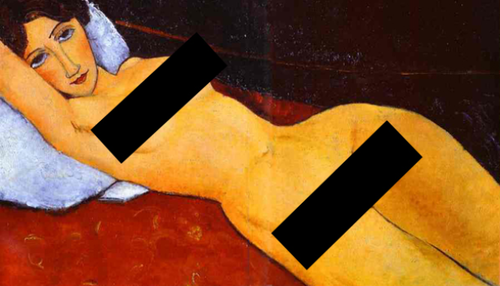
Pictures of beaches, fancy dinners, and people “exercising” aside, I’m sure, on the rarest of occasions, you stumble across a good piece of art now and then. Maybe some classic van Gogh or Monet gets posted on the ol’ feed—maybe even a little Bosch if you follow some people that live life on the wild side—but what about new art?
Scratch that, slight amendment: what about nude art? Is there a home on social media for the truly unspeakable, unbreachable, unbearable, bare-bones barely legal baring-it-all pageant that is naked people just hanging out being naked? It turns out there are strict guidelines that have been put in place to protect your precious eyes from such unbecoming subject matter; from ancient, classical sculptures to a recent polaroid of somebody’s hoohaa, if it’s depicting the nude body, chances are your feed hasn’t been showing it.

Feeling outraged? Inspired to rebel? Before you find the nearest picture of something, anything naked to post online, please be aware: these guidelines have often come with considerable consequences.
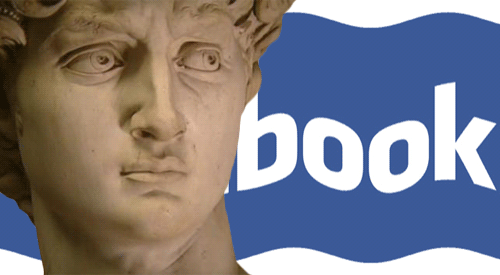
In 2011, French teacher Frédéric Durand posted a picture of Gustave Courbet’s famous painting The Origin of the World on Facebook, along with a link to an article about the work. Facebook swooped in to save the day by deactivating his account without warning or explanation. Durand has been trying to sue Facebook over freedom of speech issues and fuzzy distinctions between art and pornography ever since.
While Facebook’s terms and conditions, which prohibit nude images, were amended in 2015 to allow for nudity in works of art (Hitlerian algorithms notwithstanding), Durand continued to push for a court date, until he finally got one in Paris. The court found Facebook at fault for failing to fulfill its contractual obligations towards Durand since it gave him no notice nor specified reasons for his account’s deactivation. A significant victory for free speech, perhaps, but maybe a more modest one for Durand, whose demand for €20,000 in damages was denied. I guess the claim that one lost contact with hundreds of their Facebook “friends” can be a pretty hard one to back up, especially when that someone was able to open a new account on the same day the original was deactivated. To top it off, Durand also posted The Origin of the World again on his new account, which has thus far not been deactivated. Durand will have to be happy with bragging rights, I suppose.

But if you think that’s all in the past and nude art is now safe on Facebook, think again. Remember that shady algorithm business I sinisterly alluded to earlier? In February 2018, Facebook’s sophisticated safeguarding algorithmic technology deemed 30,000-year-old Paleolithic female figurine Woman of Willendorf unsafe for its incontinent users’ eyes.

Woman of Willendorf, Unknown Artist, Museum of Natural History, Vienna
“Look away! Look away!” - Facebook
I can’t decide whether to be offended at how grossly inaccurate Facebook’s algorithm was in differentiating an actual, living and breathing human being from an ancient historical artifact or to be impressed with how accurate it was in still identifying what would technically be considered nudity.

Famously known as “Venus of Willendorf,” the Stone Age statue depicts a voluptuous woman with prominent labia. It was commonly and unsurprisingly assumed that the piece was once used as a male aphrodisiac, though recently researchers have suggested that the figure may have been carved by a woman (gasp!) looking down at her own body.
An image of this curvy lady was posted on Facebook by Laura Ghianda, an artist/activist (“artivist”), and subsequently removed as inappropriate content by Facebook, despite four attempts to appeal the decision. A spokesperson for Facebook eventually apologized for the censorship of the statue, yet Facebook continued to block an article about the piece from being shared on newsfeeds. Ghianda has now launched an online petition asking that Facebook change its algorithms. Facebook has yet to comment further on the matter.
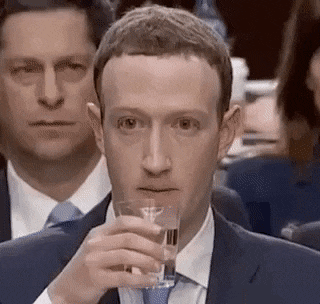
The social media giant has been running into these kinds of problems for years now. Other notable censorships include Caravaggio’s Amor Vincit Omnia, several nude paintings by Anders Zorn, Gerhard Richter’s Ema (nude on a staircase), Evelyne Axell’s Pop art painting of a woman licking an “ice cream cone,” and Edvard Eriksen’s 100-year-old public sculpture The Little Mermaid. But Facebook isn’t alone in enforcing such restrictions.
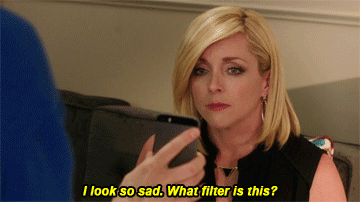
Instagram, Facebook’s cold-hearted cousin, has left no artists nor their cultural institutions unscathed either. Last year, Boston’s Museum of Fine Arts was stuck in an infuriating stalemate with the image/video-sharing platform after photos from its latest exhibition by Imogen Cunningham were removed. Some of the pictures were photographs of Cunningham’s nude body, along with a model Cunningham was working with. The museum’s photography curator Karen Haas said: “These images are so subtle and beautiful and so abstract...they’re all about shapes—about turning the body into something that’s really confounding and difficult even to read as a body.” The museum contacted Instagram, stated that they were a verified fine arts museum, and wanted to have a discussion about Instagram’s community standards, but got no response.
In fact, Sartle’s very own Instagram account has been “shadow banned” (blocking a user or their content such that the user does not realize that they have been banned) more than once over “controversial” artworks posted—the very same kinds of images our followers want to see and want to engage with (hence their following an art history account). If these issues continually arise, it begs the question: why do these platforms so frequently turn a blind eye to artwork, and what is this rigid censorship doing to our overall view of art, culture, and the world as consumers of and participants in this censorship?
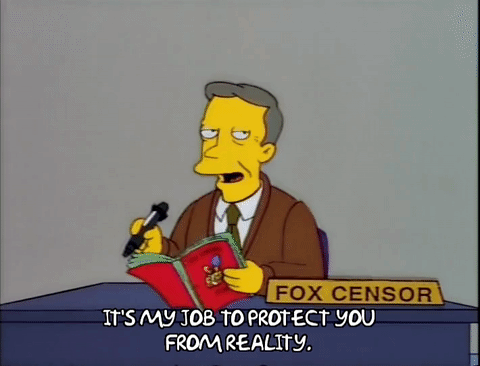
The problem is twofold: there’s the merciless algorithm that annihilates anything that remotely looks boob-shaped (celebrities withstanding) and the gang of sensitive followers who report images they find “inappropriate,” which is really the broadest of criteria. After any user reports literally whatever they want to report, there is no follow-up investigation, only swift and brutal deactivations and deletions. Should such an absurd form of judicial power be thoughtlessly handed over to just anybody with a keyboard and internet connection?
There’s a simpler answer: if a user doesn’t like the kind of content an account is posting, they should unfollow that account. As for the algorithm, certain artists have advocated for an “art button” akin to Facebook’s emoji buttons, some kind of tag which filters and thus protects artwork from these platform’s conservative fine-combing. This button could tell people they must be over 18 to view, as there might be nudity involved. And if you agree to view, you will not have the right to report.

That’s just one solution among many. The overarching issue that demands our attention is that having such widespread censorship without public discussion or amendment breeds a class of visually illiterate users. What art does show up on these sites has been described as amateur, sentimental, or even toxic in its “cookie-cutter” distillation of complex ideas like power, violence, love, and beauty. Hallmark appropriations and shutterstock images of women eating salad nourish not a human being’s appetite for culture and intellectual stimulation, nor foster a greater awareness of self and community. As long as these social media platforms run so much of our lives, and as long as these same platforms blindingly censor any art that any person on any day of the week might find offensive (art that has not already been picked off by mindless algorithms, that is), our sense of the world, of the body, of the wholeness of these things, can be dulled and our perceptions aggressively distorted.

Facebook and Instagram repost a few of Georgia O’Keeffe’s flower paintings
I’m with the artists, curators, and museums that back them; something has got to give. And while we’re waiting for that update from our social media friends, I suggest everyone go check out a local museum and see some sweet bare bods on your own, IRL.
Comments (3)

Maybe if we shared more boobies on the internet, people wouldn't be so scared of them

With the way the supreme court is going, more than art is going to be censored.










Social media has a huge hold on the way nudity is portrayed in art. In recent years, there have been a number of controversies surrounding the use of nudity in art.